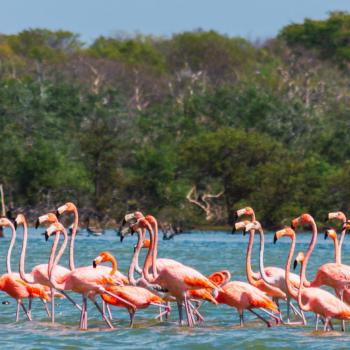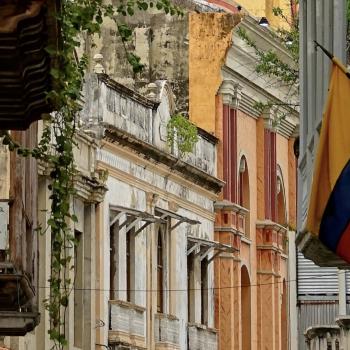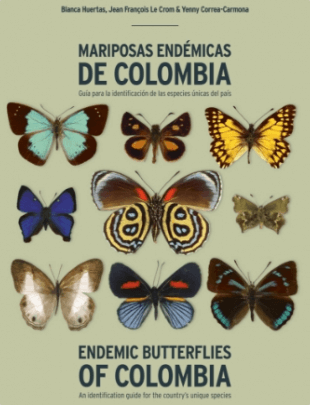Colombia has a solid tourism offer that revolves around Catholicism. Visiting them will strengthen your spirituality no matter your faith.

The architectural, artistic and cultural heritage that Colombia has built around Catholicism constantly mobilizes millions of Colombians and constitutes a tourism alternative for devotees from other countries.
The roots that the Catholic tradition has planted over the last five centuries in the country allow us to offer destinations that, apart from being suitable for pilgrimage, have enormous historical and cultural value. Additionally, the offer is not only composed of sanctuaries, basilicas and cathedrals: Cultural celebrations such as Holy Week and places relevant to the history of the Catholic Church such as Jerico— the Antioquia municipality where mother Laura Montoya, the first Colombian saint, was born—are also part of a strong set of expressions of faith that position the country as a unique religious tourism destination.
Below, you will find a tour of different emblems of the Colombian Catholic tradition and the municipalities that host them. Let it be an opportunity to get to get to know a new culture.
Architectural Miracle on the Edge of the Abyss
The Las Lajas Sanctuary is one of the most important religious tourist sanctuaries in Colombia and an engineering jewel: the church rests on a 50-metertall bridge that crosses the Guaitara river canyon, in Ipiales, Nariño, and was built to honor the appearance of Our Lady of the Rosary on a slab stone on September 16, 1754. The temple was erected between 1916 and 1949 and has been a site of veneration and pilgrimage ever since. On its outskirts there are plaques with messages of gratitude by the Virgin, and the day that gathers the most visitors is each years anniversary of the apparition.
This sanctuary holds the title of Minor Basilica, granted in 1954, and that of the most beautiful church in the world, granted by the English newspaper The Telegraph in 2015. It is seven kilometers away from Pasto, the capital of the department of Nariño, and ten kilometers from the border with Ecuador.
The Imposing White City
Popayan, the capital of the department of Cauca, is not only characterized by its endless white façades. The city has one of the most comprehensive church and religious art circuits in the country. Among the most popular sanctuaries are Our Lady of the Assumption Basilica Cathedral, which has a 40-meter-tall dome; the Church of San Francisco, an 18th-century temple that houses a first-grade relic of San Magno; the Church of San Agustin, where an image of the Virgin of Sorrows rests, and the Sanctuary Church of Bethlehem, which is on a hill of the same name and allows you to appreciate a panoramic view of the city. The tour of these imposing temples can be taken throughout the year, but as in other cities and municipalities of Colombia, its true power can be felt during Holy Week.
Another point of touristic interest is the Archdiocesan Museum of Religious Art, which permanently exhibits a collection of 14 custodians and other works of art like paintings, etchings, mantles and missals.
Home of the Lord of Miracles
The Minor Basilica of the Lord of Miracles was founded on August 2, 1907 and is home to an imposing image of cast iron 2.5 meters tall which the faithful and pilgrims approach to fulfill a promise or to make a particular request. The sanctuary is located in Buga, a municipality of the Valle del Cauca that belongs to the Network of Heritage Townships of Colombia and that houses other Catholic temples such as the Cathedral of San Pedro de Buga, the Church of Santo Domingo de Guzman and the Church of San Francisco de Asis.
The Lord of Miracles has been venerated since before the construction of the Basilica and every seven years his Rogation is celebrated, a multi-day event where the image is taken from the Basilica to the streets of Buga to lead processions and other crowded events attended by devotees and ecclesiastic and government authorities of Colombia. The last presentation of this celebration took place in September 2018.
Experience Holy Week in Colombia
Although Holy Week is perhaps the most important time of the year for all Catholic churches in the country, there are several cities and municipalities that are characterized by organizing massive events of national and international recognition.
Those in Popayan will be able to join the traditional processions (which were recognized by UNESCO as Intangible Cultural Heritage of Humanity in 2009), the Religious Music Festival, and the children’s processions. In Santa Cruz de Mompox, a municipality of Bolivar that is on the banks of the Magdalena River, the images that the faithful carry on their shoulders during the processions are its most outstanding feature. Momposinos, who have celebrated Holy Week since the 16th century, tend to decorate them with mantles and jewels made for the occasion. Pamplona, Norte de Santander, also organizes processions and the International Choral Festival of Sacred Music, an event that takes place in the most important churches of the municipality and that summons different groups from the continent.
Other Catholic Icons You May Visit in Colombia:
Jerico, Birth Town of the First Colombian Saint
Located in Antioquia, about three hours from Medellin, Jerico became a religious destination after the canonization of the first Colombian saint: Mother Laura Montoya. The missionary was born there in 1874, founded the Missionary congregation of Mary Immaculate and Saint Catherine of Sienna in 1914 and was canonized by Pope Francis in May 2013.
Basilica Shrine of the Fallen Lord of Monserrate
It is located on the hills that border the eastern part of Bogota, exactly 3,152 meters above sea level, and houses the image of the Fallen Lord, a statue dating from the 16th century. You can climb by cable car, funicular or on foot, and enjoy one of the best views of the Colombian capital.
Enter the depths of the Salt Cathedral
The vaults and caves of this sanctuary make up 8,500 square meters of architectural ingenuity. The cathedral is located inside an old salt mine in Zipaquira, a municipality located 50 kilometers from Bogota, and inside it holds representations of the Stations of the Cross and an imposing cross 16 meters tall.




























